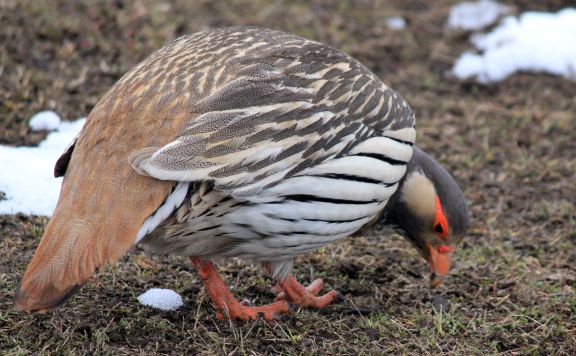Facts About Snowcock
Snowcocks are an intriguing group of birds belonging to the genus Tetraogallus, part of the pheasant family, Phasianidae. These birds inhabit the mountainous regions of southern Eurasia, spanning from the Caucasus to the Himalayas and western China. Notable for their ground-nesting habits, snowcocks primarily consume plant material.
These avian creatures are bulky and long-necked, resembling partridges, and their dense plumage equips them to endure harsh winter conditions. Although they are not adept at long-distance flight, snowcocks have a distinctive method of locomotion: they run to a high point, leap into the air, and glide to their destination. Typically, snowcocks are found on open slopes above the tree line, where they feed on various plants and insects.
Each species of snowcock is unique to specific mountain ranges in Asia. For instance, the Caucasian Snowcock resides in the Caucasus Mountains and has even been introduced to the United States. The Caspian Snowcock is native to eastern Turkey, Armenia, Azerbaijan, Iran, Iraq, and Georgia, and it too has established a population in the U.S. The Tibetan Snowcock inhabits mountain ranges across India, Nepal, Bhutan, Tajikistan, and China. The Himalayan Snowcock traverses the mountainous regions of Afghanistan, Tajikistan, Turkmenistan, Uzbekistan, Kazakhstan, Kyrgyzstan, Pakistan, Nepal, India, and China, and like the others, it has been introduced to the U.S. as well. Finally, the Altai Snowcock is found at high altitudes in Kazakhstan, Mongolia, China, and the Russian Federation.
The genus Tetraogallus includes five species:
1. Caucasian Snowcock (Tetraogallus caucasicus)
2. Caspian Snowcock (Tetraogallus caspius)
3. Tibetan Snowcock (Tetraogallus tibetanus)
4. Altai Snowcock (Tetraogallus altaicus)
5. Himalayan Snowcock (Tetraogallus himalayensis)
Each of these species may have several subspecies, each with its own distinct geographic range.

 Russia
Russia